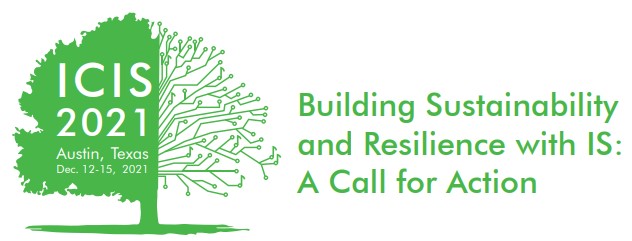IS Implementation & Adoption
Loading...
Paper Number
1165
Paper Type
Completed
Description
The adoption of artificial intelligence (AI) within organizations is experiencing growing interest. Since AI has distinctive characteristics (automation – augmentation), it is unclear how both characteristics influence the adoption. Besides, current research calls for a configurational perspective within the adoption theory. Building on these research gaps, we use the technology-organization-environment framework (TOE) and combine the AI characteristics ‘automation – augmentation’ and ‘product or service – process’ with the organizational and environmental characteristics: differentiation strategy, resources, entrepreneurial orientation, and network support. We collected a sample of 104 questionnaires from top-level and middle-level managers as well as IT experts. Using fuzzy set Qualitative Comparative Analysis (fsQCA), we reveal four different solutions, namely internal integrator, supportive provider, powerful innovator, and rising enthusiast, that explain the adoption of AI. Moreover, we show that organizations adopting AI have an explicit focus on AI characteristics. Furthermore, we underline the importance of configurational thinking within the adoption.
Recommended Citation
Laut, Philipp; Dumbach, Philipp; and Eskofier, Bjoern M., "Integration of Artificial Intelligence in the Organizational Adoption – A Configurational Perspective" (2021). ICIS 2021 Proceedings. 2.
https://aisel.aisnet.org/icis2021/is_implement/is_implement/2
Integration of Artificial Intelligence in the Organizational Adoption – A Configurational Perspective
The adoption of artificial intelligence (AI) within organizations is experiencing growing interest. Since AI has distinctive characteristics (automation – augmentation), it is unclear how both characteristics influence the adoption. Besides, current research calls for a configurational perspective within the adoption theory. Building on these research gaps, we use the technology-organization-environment framework (TOE) and combine the AI characteristics ‘automation – augmentation’ and ‘product or service – process’ with the organizational and environmental characteristics: differentiation strategy, resources, entrepreneurial orientation, and network support. We collected a sample of 104 questionnaires from top-level and middle-level managers as well as IT experts. Using fuzzy set Qualitative Comparative Analysis (fsQCA), we reveal four different solutions, namely internal integrator, supportive provider, powerful innovator, and rising enthusiast, that explain the adoption of AI. Moreover, we show that organizations adopting AI have an explicit focus on AI characteristics. Furthermore, we underline the importance of configurational thinking within the adoption.
When commenting on articles, please be friendly, welcoming, respectful and abide by the AIS eLibrary Discussion Thread Code of Conduct posted here.



Comments
13-ImplAndAdopt